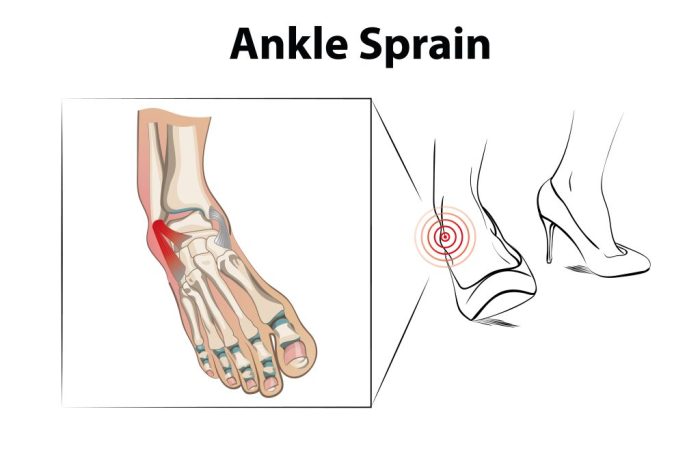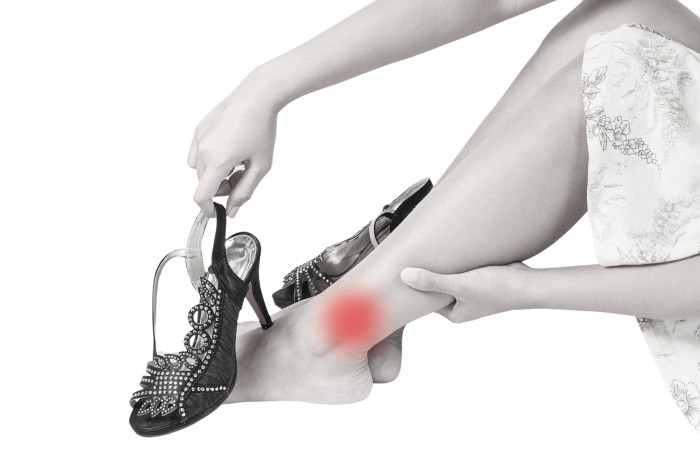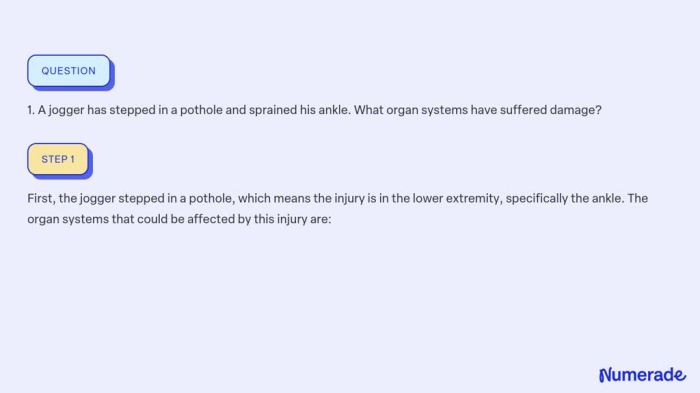A jogger has stepped in a pothole and sprained their ankle. This common occurrence highlights the significance of pothole-related injuries, which can range from minor sprains to severe fractures. Understanding the causes, types, and treatment options for pothole sprains is crucial for both prevention and recovery.
Potholes, often caused by wear and tear on roads, pose a significant risk to pedestrians and cyclists alike. Stepping into a pothole can cause the foot to twist awkwardly, resulting in sprains of varying severity. These injuries can impact mobility, daily activities, and overall well-being.
Overview
A pothole-related sprain is a common injury that can occur when an individual steps into a hole or depression in the ground, causing the foot to twist or turn awkwardly. These sprains can range in severity from mild to severe, and can have a significant impact on an individual’s mobility and daily life.
Pothole sprains are often caused by factors such as poor road maintenance, uneven surfaces, and inadequate lighting. Risk factors associated with pothole sprains include walking or running in low-light conditions, wearing improper footwear, and being distracted while walking.
Types of Sprains

There are several different types of sprains that can occur from stepping in a pothole, depending on the severity of the injury:
- Grade 1 sprain:This is the mildest type of sprain, involving a slight stretching or tearing of the ligaments. Symptoms typically include pain, swelling, and tenderness around the affected joint.
- Grade 2 sprain:This type of sprain involves a more significant tear of the ligaments, resulting in moderate pain, swelling, and instability in the joint.
- Grade 3 sprain:This is the most severe type of sprain, involving a complete tear of the ligaments. Symptoms include severe pain, swelling, and instability in the joint, and may require surgery to repair the damage.
The severity of a pothole sprain can impact the long-term effects of the injury. Grade 1 sprains typically heal within a few weeks with proper treatment, while Grade 2 and 3 sprains may take several months or longer to heal completely.
In some cases, severe pothole sprains can lead to chronic pain, instability, and arthritis.
Treatment Options

Treatment for pothole sprains depends on the severity of the injury. For Grade 1 sprains, treatment typically involves:
- Rest
- Ice
- Compression
- Elevation
For Grade 2 and 3 sprains, treatment may also include:
- Immobilization
- Physical therapy
- Surgery
The benefits of each treatment method vary depending on the individual and the severity of the injury. Rest and ice can help to reduce pain and swelling, while compression and elevation can help to promote healing. Immobilization can help to protect the injured joint and prevent further damage, while physical therapy can help to restore range of motion and strength.
Surgery may be necessary in severe cases to repair damaged ligaments.
Recovery and Rehabilitation
Proper recovery and rehabilitation after a pothole sprain is essential to prevent long-term complications. The recovery process typically involves:
- Resting the injured joint
- Icing the injured joint
- Performing range of motion exercises
- Strengthening exercises
The timeline for recovery from a pothole sprain varies depending on the severity of the injury. Grade 1 sprains typically heal within a few weeks, while Grade 2 and 3 sprains may take several months or longer to heal completely.
Rehabilitation exercises should be performed gradually to avoid re-injury. Range of motion exercises help to restore flexibility in the injured joint, while strengthening exercises help to rebuild strength and stability. It is important to follow the instructions of a physical therapist or doctor when performing rehabilitation exercises.
Prevention Strategies

There are several effective strategies to prevent pothole sprains, including:
- Wear proper footwear:Choose shoes that provide good support and stability, and avoid wearing high heels or shoes with thin soles.
- Be aware of your surroundings:Pay attention to the ground in front of you when walking or running, and avoid areas with potholes or uneven surfaces.
- Use a flashlight at night:If you are walking or running in low-light conditions, use a flashlight to help you see the ground ahead of you.
- Report potholes:If you see a pothole, report it to the appropriate authorities so that it can be repaired.
By following these prevention strategies, you can help to reduce your risk of suffering a pothole sprain.
Legal Considerations: A Jogger Has Stepped In A Pothole And Sprained

Individuals who suffer pothole-related sprains may be entitled to compensation for their injuries. In most cases, the legal recourse available to these individuals will depend on the laws of the jurisdiction in which the injury occurred.
In some jurisdictions, individuals may be able to file a claim against the government agency responsible for maintaining the road where the pothole was located. In other jurisdictions, individuals may be able to file a claim against the property owner where the pothole was located.
The process of filing a claim for a pothole-related sprain typically involves gathering evidence of the injury, such as medical records and photographs of the pothole. It is important to seek legal advice from an attorney to determine the best course of action.
FAQ Corner
What are the common symptoms of a pothole sprain?
Pain, swelling, bruising, difficulty walking or bearing weight, and instability in the affected joint are common symptoms.
How long does it take to recover from a pothole sprain?
Recovery time varies depending on the severity of the sprain. Minor sprains may heal within a few days, while more severe sprains may take several weeks or months to recover fully.
What are the long-term effects of a pothole sprain?
In most cases, pothole sprains heal without any long-term effects. However, severe sprains may lead to chronic pain, instability, or arthritis if not treated properly.